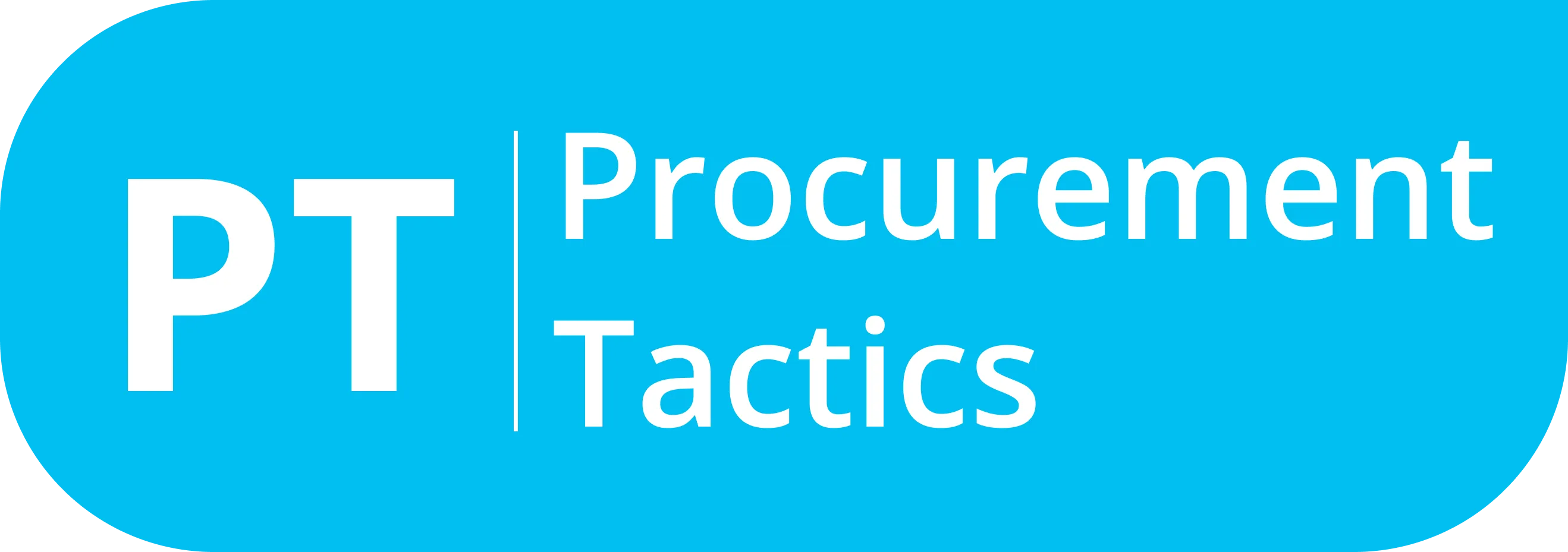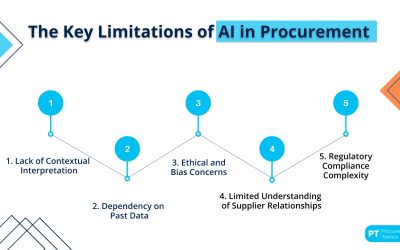Written by Marijn Overvest | Reviewed by Sjoerd Goedhart | Fact Checked by Ruud Emonds | Our editorial policy
12 Procurement Costs You Should Know
What are procurement costs?
- Procurement costs are the expenses required to obtain essential goods or services for your business, which directly supports procurement activities.
- Procurement costs are integrated into the company’s financial accounting, which signifies their importance in the overall operations of financial health.
- Procurement costs can help add financial clarity and promote sustainable and efficient purchasing practices.
What are Procurement Costs?
Procurement costs are fees incurred to purchase essential goods and services needed for your business and are integrated into your financial accounting. They serve as a key performance indicator, reflecting whether your spending practices align with business goals and helping you track expenses that directly impact profitability.
Understanding procurement costs also provides insight into procurement efficiency and resource allocation. By evaluating these costs, you can refine spending strategies, guide strategic decisions, and optimize resource use to foster growth. This, in turn, enhances your company’s competitive positioning and overall performance in a dynamic market.
12 Procurement Cost Examples You Should Know
Knowing the types of procurement costs can help you better manage your company’s expenditures. Cost mismanagement debilitates your company and leaves it in a bad position.
It is always important to know which to address, so you should know how to address it. The types of procurement costs are as follows:

1. Base Cost
The base cost refers to the cost of a good or service before adding the consideration of a price and sale. It allows the determination of whether there is profit or loss. In other words, it’s the first purchase price, which can be adjusted over time.
For example, the price paid to a supplier for only the raw materials, such as $1,000 for 50 units of steel used in automotive manufacturing.
2. Transportation Cost
The transportation cost is the cost of the logistics operation that transfers the goods from one place to another. This type of cost includes operating, fixed, and maintenance costs. Anything that is related to the moving of the goods from one place to another is under the transportation cost.
For instance, if the company needs to ship certain goods or services they would need to pay for handling fees, fuel, or any fuel surcharges. This could cost approximately $1,150. This figure might also vary depending on transportation mode such as sea, land, or rail transport system, insurance, and potential customs duties if shipping across borders.
3. Purchasing Cost
The cost of a good or service from an external source. It includes shipping and handling fees. Examples of purchasing costs include:
- Data entry – As the name states, it is entering data into the company’s managing system, to ensure data clarity and accuracy. Oftentimes, individuals handle large amounts of information in doing this work.
- File Management – The organization of files to ensure data is accessible for the company’s use. It also involves the assessment and evaluation of the said files, to ensure minimal risks.
- Duty execution – Duty execution encompasses various labor tasks that involve purchasing itself. Paying labor is a must, as it is both ethical and establishes the socio-economic relation between a company and an employee.
4. Contract Cost
The cost involves vendor contract regulation, contract enforcement, and even as a part of the contract itself. It helps establish and secure contracts of the company with the suppliers. Basically, these are anything that the company may incur in the management or creation of a contract.
The costs for a contract may vary, depending on the type of goods, services, and obligations you expect from your partners. For example, the wages for the workers involved in the project, project managers, and other staff involved, the costs of materials, the hiring of legal services, and the like.
5. Inventory Cost
The Inventory cost involves the purchase and management of inventory within the procurement process. Basically, these are the expenses incurred during the storing, managing, and maintaining goods or materials that a business holds in stock. These costs are essential to consider because they directly impact profitability and cash flow.
For example, when storing your inventory somewhere, you will need to pay for the rent, electricity, and other utility bills. Sometimes, there may even be a need for insurance.
6. Taxes
Taxes are mandatory costs that a company pays to a governing entity. These are additional costs that are fixed and cannot be compromised. These are usually imposed by governments on its citizens, businesses, and other entities so that there are funds allocated for public spending. They pay for essential services and infrastructure like healthcare, education, defense, and public transportation.
For example, there’s an inncome tax, which is charged on individuals’ or corporations’ earnings. There are also sales tax, which can be applied to the sale of goods and services, often a percentage added to the purchase price. Other taxes include property tax, corporate tax, excise tax, and payroll tax.
7. Administrative Costs
These costs cover a range of expenses related to order processing, document management, and overall communication overhead within procurement operations. They include not only the salaries of procurement staff but also the cost of office supplies, communication tools, and utilities required to support the department’s day-to-day functions.
For example, a company might incur administrative costs through payroll expenses for procurement personnel, software licenses for document management systems, and the purchase of office equipment that streamlines the ordering process.
8. Quality Control Costs
Quality control costs involve expenditures on activities that ensure goods and services meet established standards and specifications. These costs can include regular inspections, product testing, and obtaining necessary certifications.
For example, a company might invest in third-party inspections to verify the quality of raw materials or maintain an in-house quality control team to continuously monitor supplier performance and reduce the risk of receiving substandard products, ultimately safeguarding the brand’s reputation.
9. Risk Management Costs
Risk management costs are incurred to identify, assess, and mitigate potential risks within the procurement process. These expenses cover a range of activities, from purchasing insurance and developing contingency plans to implementing emergency measures that prevent financial losses due to supply chain disruptions.
For instance, a company might invest in advanced risk assessment tools or secure procurement risk insurance to protect against unforeseen events such as supplier failures or natural disasters that could impact production and revenue.
10. Payment Processing Fees
Payment processing fees are associated with the financial transactions involved in paying suppliers. These fees can include bank charges, transaction fees, and other costs related to electronic payment systems.
For example, a company might incur a fixed percentage fee for each transaction processed through online banking platforms or incur additional costs when using international payment gateways, which can add up over time and impact overall procurement expenses.
11. Environmental Compliance Costs
Environmental compliance costs are linked to ensuring that procurement practices meet environmental regulations and sustainability standards. These costs might involve expenses related to waste disposal, sustainable sourcing initiatives, and the process of obtaining green certifications.
For instance, a company might spend money on conducting regular environmental audits or invest in sustainable production methods and certifications to not only comply with regulatory requirements but also improve its public image and reduce its ecological footprint.
12. Obsolescence Costs
Obsolescence costs occur when inventory becomes outdated or unsellable due to changes in technology, market trends, or consumer preferences. This can lead to significant financial losses, as companies may need to write off unsold stock or incur additional expenses for storage and disposal.
For example, a retailer might have to discount or dispose of perishable goods or obsolete electronic components, which can negatively impact profitability and requires careful planning to minimize waste and manage inventory levels effectively.
Reducing Procurement Cost
Effectively, procurement cost reduction can help your company improve its profitability. Also, it can enhance your competitive advantage in the market.
Your procurement team can formulate better strategies, with reduced procurement costs alleviating spend weight.
This can eventually improve the company’s financial capacity to engage in more procurement activities.
Moreover, it is always important to keep in mind that applying strategic spending will help your company remain afloat.
In the end, formulating the right spending strategy can ensure a smooth sailing procurement process. Procurement cost reduction can not only help your company in terms of profitability.
It can also encourage value-building opportunities, without the worries of extensive costs.
Procurement Cost vs. Procurement Fee
Basically, a procurement cost is what you need to pay for in executing your procurement. On the other hand, a procurement fee is a charge, or payment for the services you incur in the procurement process.
A procurement cost exemplifies the overall expense on the account of the procurement itself. A procurement fee specifies the amount you need to pay on account of services in the procurement process.
The tabular information below can help you better understand the difference between procurement cost and procurement fee in a much easier way. Costs and Fees are often confused with each other. Additionally, it can help you easily clarify what you’re dealing with, when it comes to spending in procurement.
Why are Procurement Costs Important?
Procurement cost enables you to easily understand your expenditures. With this information, you can properly evaluate and determine your profitability.
A properly indicated procurement cost can help you make informed decisions, as the price allows you to calculate your spending.
Additionally, procurement costs can help you recognize possible spending opportunities, by knowing how much you can spend.
This can also help you with deciding how you will approach suppliers. Oftentimes, suppliers incorporate procurement cost reduction to make their deals enticing.
On the other hand, companies formulate their strategies depending on various procurement costs. It can help them arrive at optimal deals, while not jeopardizing the quality of their procured goods and services.
Conclusion
In summary, a procurement cost is an expenditure that helps your company continue its necessary functions. Having a robust spending strategy can help you evaluate and assess the optimal pricing of your costs.
Additionally, controlling your costs can help minimize spending. It can also help improve potential and actual profitability.
This article helps you understand procurement cost better, and how it serves as an important aspect of your company spending. By optimizing it, you can recognize, and create growth opportunities that can help the competitive value of the company.
I created a free, downloadable ABC-XYZ Analysis template. This PowerPoint file helps you gain valuable insights into your procurement costs. I’ve also made a video explaining how to use the template effectively.
Frequentlyasked questions
What are Procurement Costs?
Procurement costs are types of fees that are incurred to buy the necessary goods or services that are essential in the procurement process of your business.
Why are Procurement Costs Important?
Procurement cost enables you to easily understand your expenditures. With this information, you can properly evaluate and determine your profitability
What are the types of Procurement Cost?
The types of procurement cost are: Base Cost, Transportation cost, Purchasing Cost, Contract Cost, Inventory Cost, and Taxes
About the author
My name is Marijn Overvest, I’m the founder of Procurement Tactics. I have a deep passion for procurement, and I’ve upskilled over 200 procurement teams from all over the world. When I’m not working, I love running and cycling.

Popular Procurement Courses
At Procurement Tactics, we educate Procurement Professionals to close better deals, secure supply and advance their career. Our courses are online and self-paced.

Negotiation Course for Procurement
Learn from industry experts who negotiated billion $ deals

Artificial Intelligence in Procurement Course
Unleash the power of artificial intelligence within procurement

AI Implementation Course for Procurement Leaders
Lead the AI shift with confidence in procurement
Related Articles
Human-AI Balance in Procurement — Striking A Balance
Written by Marijn Overvest | Reviewed by Sjoed Goedhart | Fact Checked by Ruud Emonds | Our editorial policyHuman-AI Balance in Procurement — Striking A BalanceAs taught in the Artificial Intelligence in Procurement Course / ★★★★★ 4.9 ratingTable of contents AI in...
Generative AI in Procurement — Exploring 5 Use Cases
Written by Marijn Overvest | Reviewed by Sjoed Goedhart | Fact Checked by Ruud Emonds | Our editorial policyGenerative AI in Procurement — Exploring 5 Use CasesAs taught in the Artificial Intelligence in Procurement Course / ★★★★★ 4.9 ratingTable of contents...
Managing Gen Z Talent: Future-Proofing Procurement Teams
Written by Marijn Overvest | Reviewed by Sjoerd GoedhartFact Checked by Ruud Emonds | Our editorial policyManaging Gen Z Talent: Future-Proofing Procurement TeamsAs taught in the Gen Z & Generational Management in Procurement / ★★★★★ 4.9 ratingTable of contents...









